withings Sleep Review
Is this a Withings SLEEP Review or a Nokia SLEEP Tracker Review? Answer: BOTH. They are the same product it’s just that Nokia bought Withings and then, in 2018, Withings bought themselves back again. Confusing, huh? You’re confused? Think about the poor employees.
Is Withing SLEEP the best sleep tracker? Find out here
More: Withings
 I bought the Withings SLEEP sleep monitor (Jan 2019) but was somewhat annoyed to have the Nokia-branded one delivered to me. I’m used to be a Nokia fan but for the purposes of this review, I wanted a correctly branded Withings device for the images you will soon see. The free Withings Healthmate app, however, HAS been correctly rebranded so those images are correct. Good?
I bought the Withings SLEEP sleep monitor (Jan 2019) but was somewhat annoyed to have the Nokia-branded one delivered to me. I’m used to be a Nokia fan but for the purposes of this review, I wanted a correctly branded Withings device for the images you will soon see. The free Withings Healthmate app, however, HAS been correctly rebranded so those images are correct. Good?
Let’s go.
Summary
In Brief
-
App & Hardware Design - 90%90%
-
SLEEP Insights from the app - 65%65%
-
Integration, Connectivity & Links Elsewhere - 90%90%
-
Price - 90%90%
-
Apparent Accuracy - 70%70%
A Great Intro-Level Product For Sleep Monitoring
Withings SLEEP’s hardware looks a little dated comapred to the competition but it is easy to install and works well. The app also works well, especially if you have further invested into the Withings ecosystem with their other products. However its level of deeper insight into your sleep IS limited compared to pro-level SLEEP products like EMFIT & OTHER RING. It really IS a nice tool to look at your sleep but it needs to go further than that, like the OTHER RING Ring, by giving you insights and suggestions about what you need to do to address your sleep problems. But often it’s on sale for less than $/£/Eu100 and at those sorts of prices it represents good value for money. Apple Beddit 3.5 can be twice the price and is not as good.
Sleep Monitoring Tech – Limitations
There are 4 main ways in which tech measures your sleep
- Motion sensor
- Heart Rate Sensor
- Guesswork (aka clever algorithms)
- Input from you of the correct values
Other things, like the temperature of you and your environment, can also be monitored. Some products even claim to measure brain waves. Hmmm.
Motion sensors are usually built into a wristwatch but Withings uses a relatively unusual and clever Ballistocardiography-based sensor (BCG), as do Eight Sleep, EMFIT and Apple (with BEDDIT). This can, for example, detect your movements in bed and use that movement as one guide to what stage of sleep you are in. However, Withing’s sensor is SO accurate that it can even detect the physical movement of your heart, so Withings SLEEP has no need to measure your heart rate by optical or electrical methods – as would normally be the case with other sleep tech.
The sensor goes under your THICK MATTRESS and still senses your heartbeat. Clever! I’ve used a competing product for a couple of years and the tech REALLY does work as a sensor of even the tiniest of human movements.
The problem that ALL of the sleep techs has is that it’s actually fairly hard to determine even simple things like when you went to sleep or woke up. If you think about it those two events are NOT the same; as sleep events are different to bed entry/exit events. Furthermore, when you are in bed reading you are hardly moving but how does technology know that and that you are not asleep? Actually, those problems CAN mostly be solved reasonably well but the difficulty then comes back to accurately assessing your sleep stages.
Let’s face it, I would like to bet that AT LEAST half of you who are reading this review have some sleep issues and might, for example, be aiming to increase your amount of DEEP SLEEP. The problem is that even lab-based sleep technology does not get the determination of sleep stages correct much of the time. READ THAT SENTENCE AGAIN. So you have to set your expectation levels NOW that Withings, or any, consumer SLEEP tech is certainly NOT going to be accurate all of the time when it comes to telling you your SLEEP STAGES. Company marketing info might imply otherwise – for example, Fitbit say that they have millions of hours of recorded sleep upon which to base their algorithms…what if it is millions of hours of incorrectly measured & assessed sleep?
However, all is not lost! As we move through 2019, optical heart rate tech is now actually pretty accurate at resting/sleeping levels of heart rate and so is the BCG tech used by Withings SLEEP. Both these HR technologies are SO accurate that they CAN measure HRV. HRV is a measure of the lack of consistency of your heart rate and sounds like a bizarre thing to measure but actually, it is a VERY GOOD scientific measure of the relative state of your nervous system. HRV data can then be put through various mathematical models to determine stress (physical and/or mental stress – but it can’t differentiate between the two). So that’s all cool but to be clear HRV can’t tell you your SLEEP STAGE by itself, as far as I know.
Finally, many SLEEP tech companies ask you for your usual SLEEP and WAKE times. This IS a bit of a cop-out for them and their inadequate measuring and algorithms. But at least your input of a sleep/wake time focusses their tech on looking for sleep data at the right time of day. So it is well-intentioned and should help improve the trust in the data they present to you.
Lecture over. Let’s move on.
Withings SLEEP – Unboxing, Installation, Setting Up
There really is not much to see here, other than a box that says NOKIA when I wish it had said WITHINGS (Grrrrr).

Even my ageing, great Aunt Mable knows what to do with the USB cable and plug. She also knows what to do with an iron…unlike me (see image above).
Aunt Mable would probably marvel at the high build quality of the Withings SLEEP ‘pad’ – although it’s bigger than the somewhat flimsy strip in Apple’s BEDDIT sleep monitor. Once you have installed Withings SLEEP then you can’t feel it at all. You can’t see it either…which is a shame, as I think it looks quite nice!
Here is how you ‘install’ Withings SLEEP.
It really is almost the case of simply “sticking it under the mattress“. I have a slightly unusual bed setup with a mattress; then an electric blanket; then a memory foam topper; and then 2-bed sheets. When combined with a memory foam topper I’ve found that the Withings SLEEP signal will NOT travel through both of them and this is probably due to the density/softness of the memory foam in some way. Indeed if you have a full memory foam mattress then I would check if the signal will travel though that.
Eventually, I put the Withings SLEEP underneath my topper and above the mattress but you should be OK putting it under the mattress as per the instructions. Also, please note that I won’t have my electric blanket on at all when I am in bed.
The best position for the Withings SLEEP is approximately at your ‘heart level’ going from the edge of the bed to the middle of the bed. Positioning is not an exact science but it should look something like the following images
The electronic wizardry is hidden away in a pouch at the end of the pad and, as you can see, it can be removed. The pouch is an inch or so thick but I can’t feel it when in bed and it’s under the topper and you certainly won’t feel it when it’s under the mattress.
Once under your mattress, you run the cable to the nearest power socket. All is good.
But then it starts to whir and vibrate after you’ve turned it on. This is a bit worrying. However, it does this every day and when you turn it on. My understanding is that it is calibrating to the weight of the mattress in some way.
No doubt you will have already downloaded the Withings HEALTHMATE app. You pair the SLEEP monitor up and you’re good-to-go (to sleep).
Withings SLEEP – Extra Settings
The two ‘normal’ settings that need to be made are firstly for you to link your Withings SLEEP monitor to your WiFi and secondly to enable/disable snoring detection. We will look at the ‘snoring’ data later but for now it’s good to note that Withings use of WiFi is highly sensible. The competing EMFIT does the same WiFi enablement as Withings but EMFIT’s setup is not as easy (actually Withings’s could be improved but it’s alright). However Apple’s BEDDIT Sleep Monitor does not support WiFi at all. The great things with WiFi connectivity are that you do not need a phone present, paired and turned on.
The final ‘extra setting’ that can be made opens up the whole exciting area of home automation. To do that you’ll need a to open a free account with IFTTT (if this then that) and then create some electronic ‘recipes’ to link devices together. Home automation devices both recognise certain kinds of instruction AND produce certain kinds of NOTIFICATIONS. So you can combine Withings’ “Hey I’ve just got out of bed notification’ with and instruction to turn on a Phillips Hue light (I have TP-Link home automation stuff). You can put 2 and 2 together and guess what happens. Yes! you get out of bed and the light turns itself on by magic..handy for those 4am bathroom visits.
Clearly, there are a whole raft of jokes in this area as we are dealing with a bed product. So whilst there is a getting into bed ‘event’ that is recognised by Withings there is not, unfortunately, an IFTTT instruction to turn your partner on. That, my dear reader, is up to you.
Ha ha.
Here’s a flavour of some of the IFTTT things that Withings supports and new ones can be added all the time.

Withings SLEEP – Stating the obvious
If you and your partner (or dog/cat/baby) both lay on the Withings SLEEP sensor then it absolutely WILL pick up both of your heart rates. So if you are caught in the throes of (love) then maybe consider a wrist-based sleep monitor or ring-based sleep monitor (like the new OTHER Ring – Review). However, I have used similar under-mattress technology for a few years and have not really had this problem so you might not spend quite as much time on the same side of the bed as you would think.
- Yes, you and your partner can each have a Withings SLEEP monitor on your own side of the bed.
- No, it won’t know what to do if you change sides 😉
Withings SLEEP – “Health Mate”
“Withings SLEEP” is just the name of the physical SLEEP product. This product forms a part of the overall Withings Health Mate platform which comprises an app and online portal to your health, activity and fitness information. So you may well also be considering, or already own, these products from Withings which provide lots of other data on your lifestyle and physiology:
- Scales – Body, Body+ and Body Cardio models. Your weight is synchronised to the Health Mate platform over WiFi. The “Body Cardio” model even measures and synchronizes your body composition (fat/muscle) data to Health Mate
- BPM – Blood Pressure Monitor – an upper arm sleeve like you have at the doctor’s surgery which, again, links over WiFi
- Thermo – Thermometer – measure body temperature from the temporal artery and send the info over WiFi
- Activity Tracker Watches – several models including Move, Move ECG, Steel, Steel HR, Steel HR Sport. these watches tend to buck the current trend by typically being electronic smart watches *BUT* they look like elegant analog watches on the whole.
- Activity Tracker Band – Pulse HR model.
Withings SLEEP does work fine in isolation but your insight into yourself is enhanced if you invest in their other products. However you are not obliged to invest further in other Withings products and you can link the Health MAte app further afield to RunKeeper, Google Fit, MyFitnessPal, IFTT, NEst, Samsung Health and Apple Health.
You can also enter figures manually into Withings Health, rather than buying the Withings product, for example, you can enter body composition and weight information each day if you like.
Health Mate App
Let’s look in a little more detail at the SLEEP data that gets into the Android app. I’m assuming that the iOS version is similar and there is certainly very similar information on the web platform as well.
It’s a nice summary of the key aspects of your sleep. You get a score out of 100, in this case, 78%, and above it you get Withings view of your sleep stages.
This seems to me to be the right data that people REMAIN interested in after a few months of use. When you first get the sleep tech you agonise about why your heart rate was low for 15 minutes at 4:15 in the morning and then wonder why it is so high at 11:45 most Friday night’s. When the embarrassing realisation kicks in, you quickly turn your attention to other aspects of your night’s activity.
Yes, after a while you just want to see that headline figure…78% and it seems to tie in with your view on whether or not you had a good nights sleep (kinda makes the tech somewhat redundant but it’s nice to have a log of these things). But then the SLEEP STAGE info seems to retain a perpetual fascination. Members of my family all look at this data differently depending on whether or not they are athletic and looking for physical recovery, or studying and hoping for fabled gains from memory consolidation, or perhaps just looking to see at what time of the night the alcohol has worn off.
Snoring is just one kind of those annoying ‘night noises’. You might sleep with someone who makes other, irritating noises whilst asleep, such as shallow breathing, and Withings doesn’t pick those up in my experience. However, it does catch the occasional beer-induced period of proper snoring as you can see in one of the charts below.
So, there’s quite a few other views and other capabilities such as the ability to ‘edit ‘ a night’s sleep. The images below should all be relatively self-explanatory. In some way, they are all geared towards helping you understand what is happening whilst you are asleep as well as giving you a slightly more refined view as to how well you are sleeping.
I’ll leave it at that.
I like what Withings do with their SLEEP product. For Jo Bloggs, the typical consumer, it ticks most of the boxes that usually need ticking.
It’s much better than the competing Apple BEDDIT product and cheaper too.
Healthmate Platform ONLINE
Very similar information is presented in a very similar way online, like this
 and there are the usual weekly and monthly sleep trends, like this:
and there are the usual weekly and monthly sleep trends, like this:

Withings SLEEP – Accuracy
Most people who I speak to about sleep data are wrong.
My chats with several friends who use this and similar technologies are quite enlightening. Without exception, they are all amazed by the data they get and are really interested in what it tells them. Sometimes their interpretations of, for example, sleep stages are wrong but that’s not the point I am making here. Without exception, they all assume the data is correct.
Their sleep stages ARE the gospel truth and are believed. When pushed, people accept that the time-in-bed and time-asleep are not always correct because, for example, they are reading (aka using Pinterest to find another cute cat picture)
I certainly do NOT claim to be a sleep scientist. But I have read a little around the subject and I have talked to some of the companies who make this kind of tech. so when I use this kind of sleep tech, I start out from the assumption that I know how I should feel and I know how I actually feel. If the sleep tech can suggest an explanation for the difference then I might give it a bit more thought.
Perhaps you should be a little bit LESS cynical than me. It probably is reasonable to assume that the basic time-in-bed and time-asleep data is mostly ‘about right’, however, let’s look at what different tech says about the same nights of sleep, particularly looking at sleep stages and nightly (resting) HR.
I’ve put some comparative data of different sleep technologies in the following sections which are based partly on some other reviews I am writing and I’ve also added to that the last few nights of my sleep – just for this review. Here is Withings SLEEP compared to several other sleep tech products. Please take a view yourself about how the data is presented but I will make comments about how I see similarities or discrepancies between the data.
Night 1 – Sleep Stages
I use EMFIT to gather *MY* sleep data every night and have done for a couple of years.
It’s time to add some new tech to my bedroom
At first glance EMFIT and Withings SLEEP look to present quite different sleep stage information throughout the night. Look a little bit more closely and there are some elements of similarity. That’s not to say either or both are correct, of course.
Night 1 – HR
For the same night, you can also track your HR. Withings SLEEP is clearly smoothing the data more, whereas EMFIT is more of a ‘detailed data’ product and so is giving every twist and turn of the curve for a likely different intended user. IIRC EMFIT captures data every 5 seconds or so. These charts look fairly similar to me at first sight.
Night 2 – Sleep Stages
Keeping with the same two products but on a different night you can see that there is much less similarity here with Withings SLEEP skewing the LIGHT sleep stage towards the end of the night and with EMFIT identifying more periods of REM sleep (the peaks) evenly throughout the night
Night 2 – HR
Again the resting HR track is not dissimilar on first sight. However looking at the one data point I highlighted at 03:00 AM you can see there may be a couple of bpm difference.
Night 3 – Sleep Stages
OK, you’re getting the hang of juggling with two balls. Let’s throw in a third one. This time from a Garmin 935 wrist watch. So we are comparing optical HR and a motion sensor in the Garmin on the wrist to two under-mattress BCG monitors. The Garmin should be accurate for resting HR but, I would contend is likely to be as wrong or right as the others with sleep stage guesstimation.
The tech is suggesting similar start and end times. But 10 minutes difference here and 20 minutes difference there, soon gives half an hour difference for 7 hours of total sleep. So there is a likely 5-10% error on the most basic of sleep measurements.
Being a little bit fairer to each tech, they do broadly present a similar visual pattern to the sleep stages. With similar chunks of LIGHT sleep at similar times of the night. Q: Which one is the most accurate? A: You can’t say
I’ve left this summary chart in from EMFIT as it gives the ‘green box’ of the ideal amount of each sleep stage to have on any one night, you can easily see that this night was lacking in REM sleep but had plenty of restorative DEEP sleep. EMFIT has a whole host of these summaries of different aspects of your sleep and y ou can then drill down into the second-by-second detail if that is your thing.
Night 3 – Resting HR
We still have the same 3 pieces of tech, including the Garmin 935, on the same night but are now looking at a simple resting HR track.
Like me, you might conclude that the vendors need to work a little bit harder on their Y-axis. It’s tricky to read much into the Garmin chart other than the clearly visible blip at the start of the night also appears on the other charts.
Night 4
This time we replace the Garmin with a Polar Vantage V. I’ve included this chart as Polar do not claim to be able to detect sleep stages. Polar has been one of the leading HR detection companies for very many years and has produced large amounts of scientific literature related to heart rate data. So you would have thought that by now they would have figured out how to detect sleep stages…or…..maybe….it’s not so easy to do…or simply impossible to do if Polar can’t do it (Apple can’t either FWIW…just sayin’).
So, Polar’s view of a night of sleep is a bit more boring. But, possibly, at least there is accuracy in the boredom of the data. Instead of sleep stages, they claim to detect interruptions to sleep ie how fragmented it is. And that is probably a reasonable thing to claim to be able to do accurately.
 Compare that to the EMFIT data (sleep stages & HR track)
Compare that to the EMFIT data (sleep stages & HR track)
And to the Withings data (sleep stages & HR track)
It’s easier to compare the high-level Withings numbers (6:19 hrs of sleep at avg 59bpm) against these following two summary charts from EMFIT (6:33 hrs of sleep at avg 60bpm). The HR numbers might be similar and the claimed sleep duration also ties well to the Polar (6:32 hours sleep)
Night 5
This time we swap the Garmin/Polar for the rather nice Coros APEX smart endurance sports watch which also has sleep analysis and sleep stages. I suspect you can see where I am going with the data presentations so far, much of the data doesn’t seem to tie up
Oh, hang on. this is a bit inconvenient. This time the high-level heart rate numbers are very similar. EMFIT might argue that they read data more frequently and so are more likely to pick up the outliers. Maybe, just maybe we are starting to see more agreement on the numbers?
| HR | High | Avg | Low |
| Coros | 66 | 54 | 49 |
| Withings | 66 | 55 | 49 |
| EMFIT | 75 | 56 | 47 |
Here is the data that gives the table above
But this time the sleep stage data is more interesting, have a quick glance at the following charts. Withings and Cors tie up VERY nicely with their sleep stages, at least they LOOK LIKE they do.



Night 6
Tonight’s new product was the Bio-hacking tool BioStrap – again compared to Withings SLEEP and EMFIT
The basics are broadly similar. As before EMFIT would likely say that there more frequent measurements pick up more of the true outliers from the night.
| HR | High | Avg | Low |
| BioStrap | 87 | 60 | 50 |
| Withings | 68 | 59 | 48 |
| EMFIT | 104 | 61 | 46 |
And the resting HR curve shows a similar trend when compared across each of these three products.
Once again the EMFIT summary is clear and to the point

But the sleep stage data from the 3 systems, whilst showing similarities, just doesn’t tally.
Night 7
This time we take a more cursory look at Apple’s Beddit 3.5 product. The only reason we are taking a cursory look is that there is very little data to look at.
Here we go, even the data type that is shared (heart rate) doesn’t match up.
Hmmm ALL of those graphs might share some similarities…but not many. You’ve seen enough graphs that don’t match up when they should. I’ve laboured the point. Let’s move on.
Withings SLEEP – Accuracy Summary
>> Science: here, or here, or here
My understanding from reading through the subject of SLEEP STAGES is that it is effectively not currently possible for consumer-level products to match the accuracy of lab-based polysomnography. I believe that goes much of the way to explaining why the sleep stages you’ve seen above compared between products just simply do not match up.
However, if you want to track your HR throughout the night or look at your time in bed or time asleep, and measures linked to that, then my gut feeling is that most of the technologies will give you a sufficiently correct insight. Indeed that gut feeling also ties in with some of the heart rate companies that I’ve talked to as well!!
Remember: The tech is not perfect. If you want perfect data then give the tech the best chance it can to help you. Don’t read in bed or at least turn the device ON when you’ve finished reading.
Summary
I like the Withings SLEEP product. I liked it much more than I expected at the outset. It fits well into the Withings ecosystem and connects well to other, external health and technology platforms.
It’s not for me though. Withings SLEEP doesn’t have enough information on recovery and I trust what it says about sleep stages less than I do with other products I use (EMFIT).
Price, Availability & Discounts
This is a mature product that is generally widely available both from the manufacturer, Withings and elsewhere
Typically expect to pay less than £/$/Eu100 from Amazon. And at those prices, it’s good value-for-money, in my opinion.
Thank you. I hope you enjoyed the read.


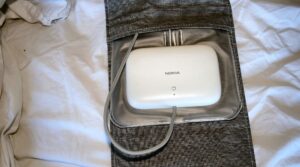



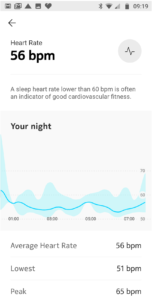
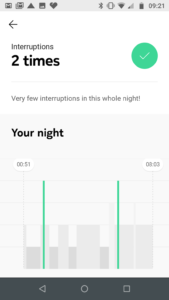
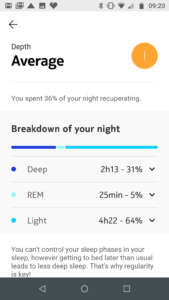

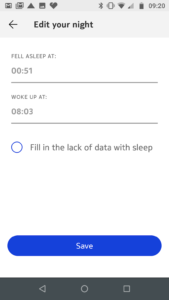







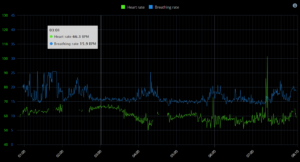



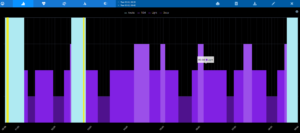







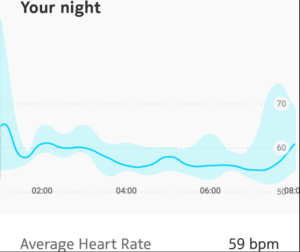













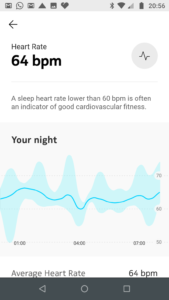

No apps can measure sleep stage, it is really silly believing that consumer apps and solutions can measure such a complex issue. Slepp stages are related to brain electrical waves which implies placing electrodes around the scalp of the head in order to measure sleep stages correctly. These apps are not even close to measure sleep stages. Just fraud.
yes.
but the vast majority of people believe the opposite
Your site doesn’t show images with firefox
thank you for the feedback
i use firefox and yes i agree sometimes it does not show images on first load. if you reload the page (press f5) then it does.
I appreciate the limitations of measuring sleep with these devices, but have you compared any of these watches/sleep tech to a pure phone based app solution that uses the mic (e.g. sleep score on ios or an equivalent android app)?
Given they are all inaccurate to a (reasonable) degree, I wonder if just using your phone is much worse than the others!
I’ve never used a phone by itself.
most of the bed-based devices and watches will give you something of a ‘take’ on your sleep to varying degrees.
after that It comes down to the quality of the app for the purpose you intend to use it for and also the accuracy with which some of the metrics are measured eg HRV and the cleverness of the algorithms to distinguish between out-of-bed actions, awake moments and all the rest of it.
to answer your question: it probabyl is not as good and will provide poorly actionable data. then again there is little financial outlay with an app
I’m used a Polar M430 for a while, which was interested, but I don’t really like wearing watches at nighttime. From my use of (e.g. Sleepcycle on android ), the charts they produce show fall asleep/wakes fairly reasonably. “Sleep as Android” can aggregate Sonar from the phone, accelerometer and heart rate from a watch (for some watches), which is quite a bit more data that other solutions. If/when you are next doing a comparison review, and obviously your time permitting, it would be intriguing to include some of these in the comparisons.
thank you for the feedback it is appreciated. I do have other work planned in this area.
essentially though, my interest in any tech that just tells me a glorified version of “wake time less bed time = sleep time” is not high. so i am looking at tech that tries to provide deeper insights into sleep
Just stumbled upon Dreem (http://dreem.com/) today, and was wondering if you’ve ever heard of it. It’s substantially more (2-4x) than the other sleep monitoring devices you’ve reviewed, but since it’s actually on your head with EEG sensors, it may be even more accurate? Anyways, just curious to hear your thoughts on it.
I have seen it and only given it a cursory glance.
I think you would have to be pretty keen to wear that every night.
That’s true, you need to remember to wear it every night and charge it every morning. I guess it’ll all depend how comfortable/uncomfortable it is. They have a 14 day trial period, so I suppose I can give it a shot once they start shipping to the US.
The biggest problems I have with consumer sleep tracking solutions are that many of the metrics have questionable accuracy at best, and that many of the metrics are kind of useless. For instance, lets take sleep staging. Many sleep tracking solutions claim to be able to tell you when you’re in light sleep, when you’re in deep sleep, and when you’re in REM sleep (never mind those aren’t even proper sleep stages); but most of these sleeping solutions are claiming to be able to do this through nothing more than actigraphy, heart rate monitoring, and in some instances, breath monitoring. Even if you take one of the above stages of sleep, let’s say REM sleep, a stage characterized by rapid movement of the eyes and increased brainwave activity, how is a sleep tracker even supposed to sense that? Putting that aside, for the sake of argument, let’s assume the sleep tracking solution could track REM sleep with 100% accuracy. Now what exactly are we supposed to do with that information? If ones REM sleep is low, are they supposed to somehow try and dream harder the next night? The truth of consumer sleep tracking is that the only information that a it can give you that is even remotely accurate(-ish) and useful is ones time asleep and their heart rate – anything else at best is just a guess. You might as well just keep a pen and paper sleep log.
I 100% agree with you
the tech manufacturers don’t…at least in public.
however HRV information is useful and indicates recovery states. some of the emfit stuff is proper science and they are pretty honest in what they claim
I like that the apnea detection in the new model (Withings Sleep Analyzer, only available in Europe right now) had to go through an approval process and matches well to polysomnography studies.
First night, severe sleep apnea, as suspected. Off to doc with my symptoms next week. Money well spent.
Can I use both withings and emfit at the same time?
yes
if you send the data to the same end place you may get duplicates but the two shoul dnot interfere with the recording that each other does